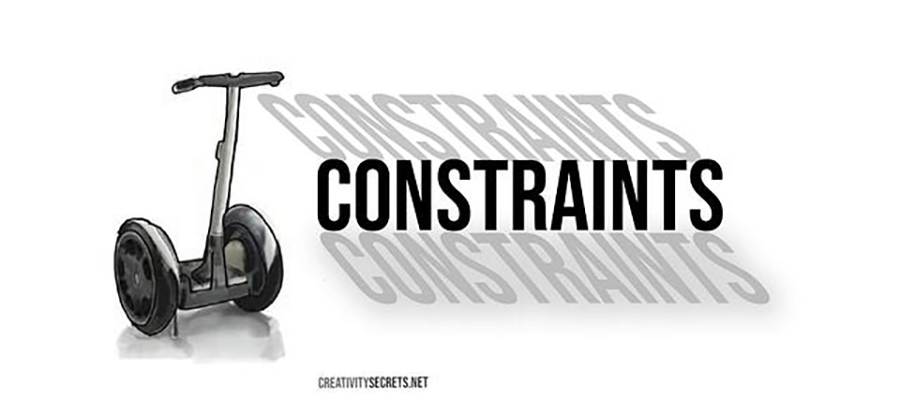Creating with Constraints & the Segway 'Anti-Example'
Your constraints have shaped you into becoming the “Unique You”
Constraints or “perceived limitations” are essential to and often define and shape the creative process positively. One is pushed to work with or rather forced to focus and work around those limitations. It also helps one get started and often leads to new solution paths. For example - in architecture design, budget, time and site constraints define the starting design direction and shapes the creative solution.

Constraints are a blessing in disguise that can help focus our creative energies on the essentials and on areas that are under our control. Without constraints, one can get lost in a myriad of choices and directions, failing to reach creation’s full potential — as it happened in the case of Segway.
The Segway ‘Anti-Example’
Segway was an engineering marvel and was expected to be a runaway hit when launched in 2002. Instead, it failed at the launch.
Zero or rather an almost lack of typical constraints during its creation, contributed to Segway’s failure at launch. Segway was developed without the typical constraints of time, money (pre-launch $650 valuation through millions of dollars of funding), or client/customer/user-demand constraints. A lack of budget constraints led to a limited desire/need and much less focus on ensuring its immediate commercial success. There was a lot more focus on the “function” — engineering, without much consideration for the “form” elements — aesthetics, customer emotions, and responses. There was no consumer group testing et al (driven also by the need for secrecy and the innovative nature of the product). As a result, the aesthetics ended up being disliked by the potential buyers. There was also no defined or specific use for it (no defined target market) at its launch. As a result, Segway failed to gain any market traction and continued to struggle for years to come — less than 30,000 units sold in the first 5 years (compared to the management’s prediction of 10,000 units/week of sales in the first year).
Resource abundance often leads to hubris and complacency, while constraints can inspire and push one to focus their limited resources on the essentials.
Large corporations (read IBM, GM, Walmart) with abundant resources, often fail to innovate while small startups (read Tesla, Amazon when they started) with limited financial and other resources have been able to innovate and create successful products and businesses.
Constraints & You: Embrace Them
Your constraints have defined and shaped you into becoming the “Unique You”. Those constraints include your past experiences (including job experiences), formal and informal education, interactions with others, and learnings from them. Don’t try and forget or bury or change those. Embrace them instead.
You can either brood over all the limitations and constraints you were born with or have been handed through some bad/unfortunate experiences and incidents, or you can choose to accept and use them to your advantage. Choose the latter — embrace and work with those “constraints”, for it will not only give you the necessary peace-of-mind, but also help you get on the creative journey of creating your own unique masterpiece, a lot sooner.
_____
CREATIVITY SECRETS
The above is an excerpt from the book: “CREATIVITY SECRETS: Creativity & Innovation Secrets for Design | Business | Art”, 2018, by ABHAY (Wharton grad, Artist, Entrepreneur). www.CreativitySecrets.net